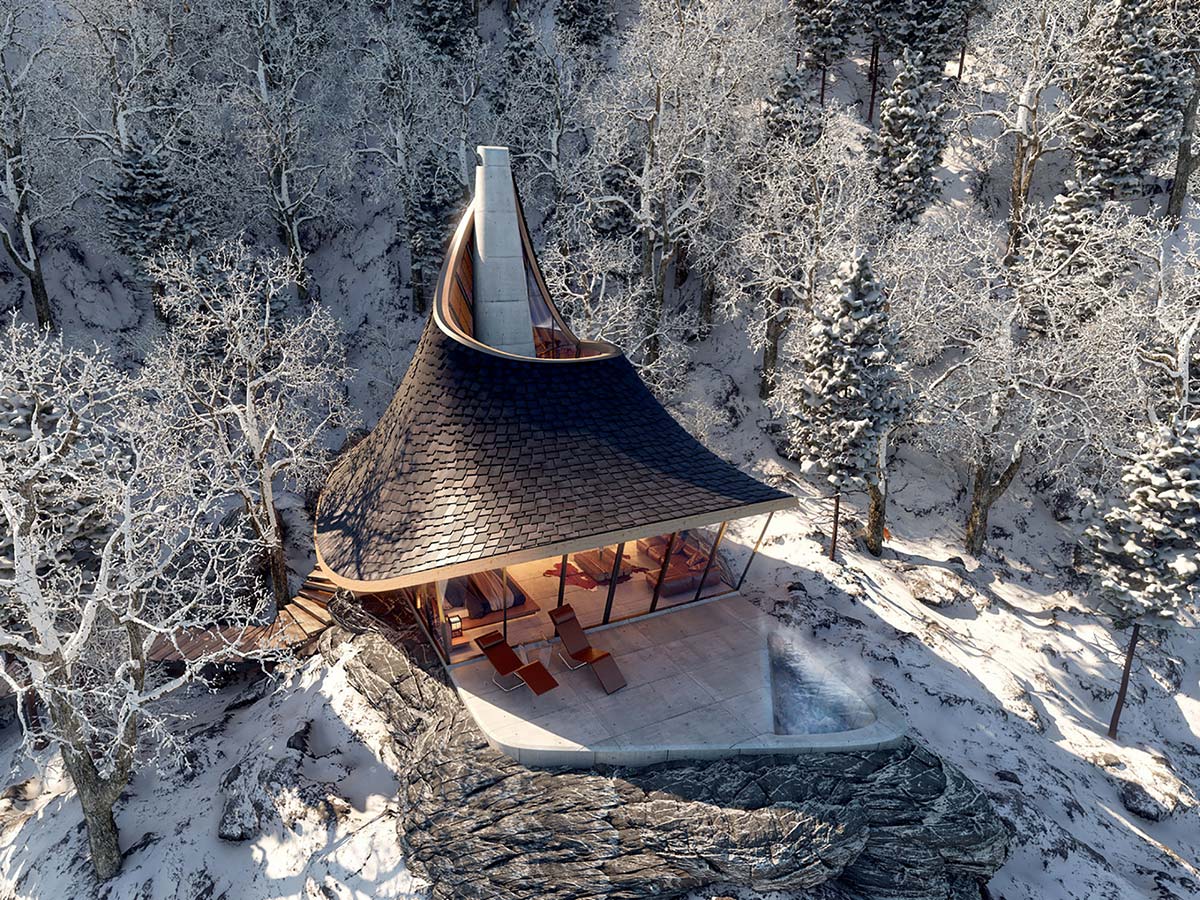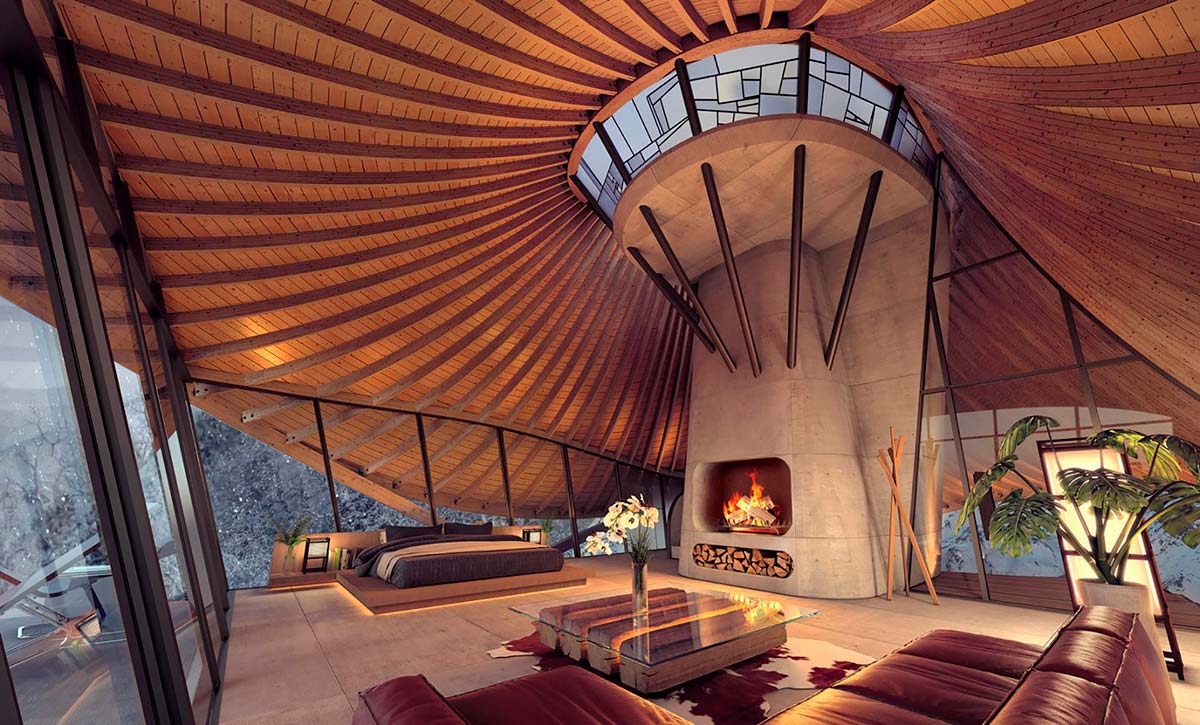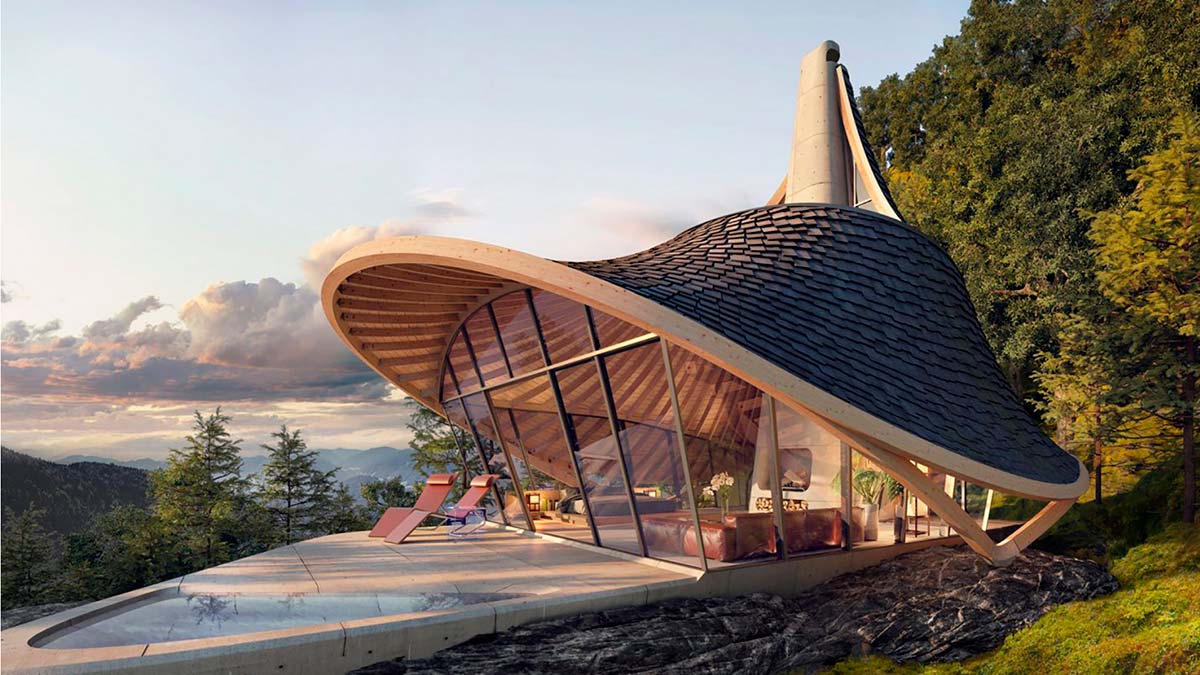Conceptual design is not only one of the first stages of any architectural project, it’s also a field of experimentation in architecture, an arena for speculation and challenge, where all actors in the sector make forays into innovative solutions. A recent project has caught our attention in this respect. We are talking about YEZO, a conceptual design of a mountain cabin by the international studio Laboratory for Explorative Architecture & Design (LEAD), based in Hong Kong. With the aim of maximising construction efficiency and minimising human intervention, LEAD created an algorithm to which it entrusted an important part of the design of the cabin. YEZO is yet another example of the growing role of Artificial Intelligence (AI) in architecture.
YEZO is a cabin created to adapt to the conditions of the Hokkaido forest in Japan, a mountain retreat “defined by wood, stone, water and light, surrounded by ever-changing natural beauty”, in the words of its creators. The starting point for the design was sustainability, in other words. performance and savings, both in terms of materials and construction requirements. So, the algorithm was responsible for defining the structural elements with maximisation criteria. Through its calculations, it was established that each of the beams supporting the curved roof could be produced with different cross-sections, that is to say, with different angles and lengths from a single mould. For the rest, LEAD chose GluLam beams, which reduce the weight and the amount of timber required by 90% compared to traditional beams.
The result is a minimalist building in which curves reign, with an expressiveness that makes us vaguely dream of fantasy worlds. On the other hand, the central role of the chimney in the space, as the axis around which all the beams revolve and from which all the beams are suspended, gives the interiors a great sense of comfort. The warm, natural colours only accentuate this. All in all, a conceptual design for a building that reduces its cost and construction time, and therefore its ecological impact on the environment, produced with the direct assistance of AI. For a thorough understanding of the project, we invite you to watch this explanatory video:



Sources: My Modern Met, LEAD.
Images: LEAD.






